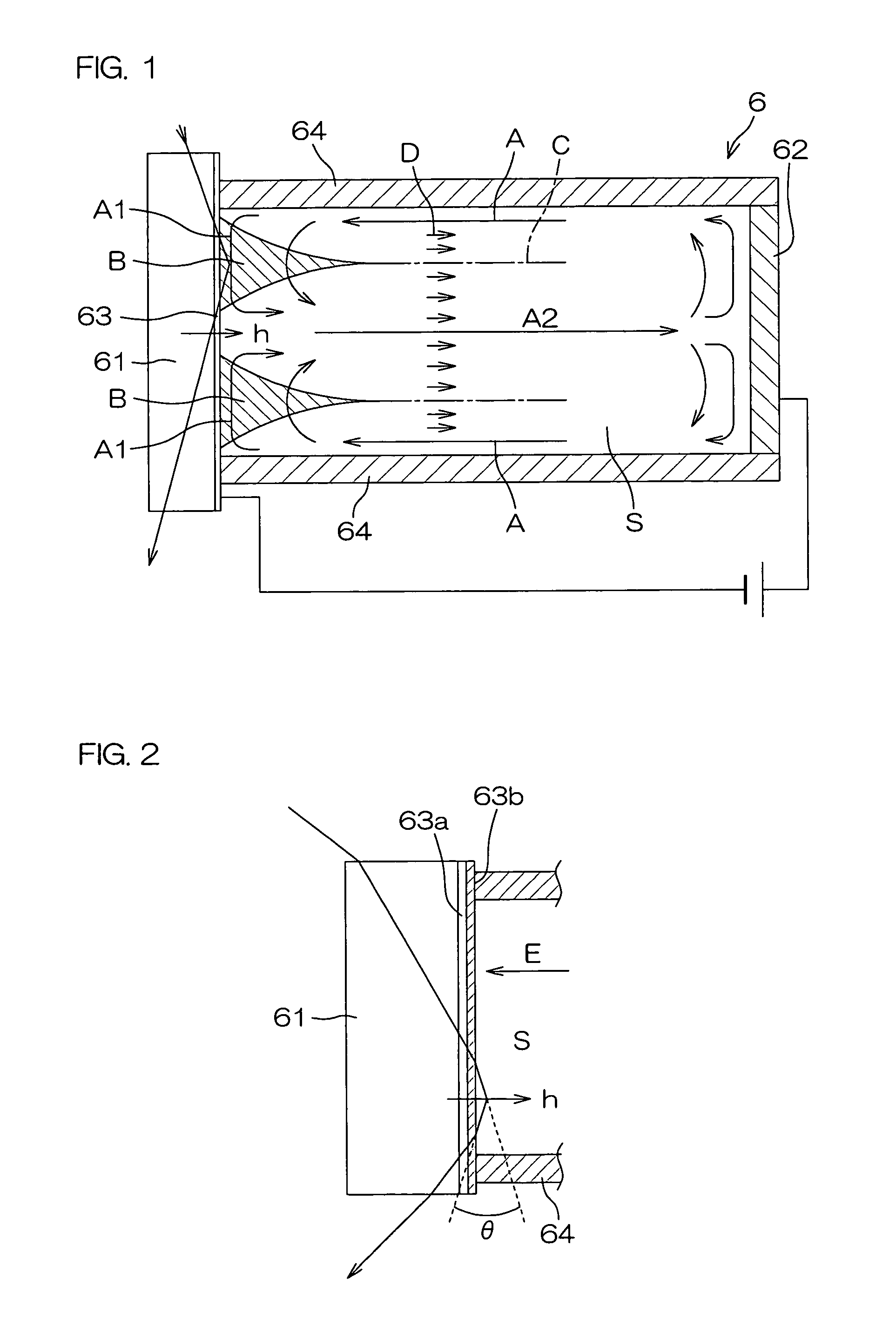Electrophoretic mobility measuring apparatus
a technology of mobility measuring apparatus and electric field, which is applied in the direction of fluid pressure measurement, liquid/fluent solid measurement, peptide measurement, etc., can solve the problems of difficult to measure the velocity of particles moving in the electric field direction, deteriorating measurement precision, and reducing optical attenuation, so as to achieve excellent sensitivity and reduce optical attenuation
- Summary
- Abstract
- Description
- Claims
- Application Information
AI Technical Summary
Benefits of technology
Problems solved by technology
Method used
Image
Examples
examples
[0064]As shown in FIG. 12, an ITO film 63a having a width of 10 mm, a thickness of 100 nm and a length of 6 mm was formed on a quartz glass 61, and then coated with a platinum 63b having a thickness of about 4 nm. The light transmission in the vertical direction was measured as about 50%. The electric resistance value between the end faces was calculated. That is, the ITO's resistance value was 8.4Ω since the ITO's electric resistivity was 1.4×10−4Ωcm and the end-face section area was 10−5 cm2. The platinum's electric resistivity is 10×10−6Ωcm. However, the electric resistivity of platinum in the form of a thin film, seems to be a half of the value above-mentioned. Since the end-face section area was 4×10−7 cm2, the platinum's electric resistivity was 38.25Ω. The combined resistance was equal to 1 / (1 / 8.4+1 / 38.25)=6.9Ω. Accordingly, since the platinum film is thin even though the platinum's electric resistivity itself is low, the use of platinum does not contribute so much to reducti...
PUM
| Property | Measurement | Unit |
|---|---|---|
| wavelength | aaaaa | aaaaa |
| refractive index | aaaaa | aaaaa |
| refractive index | aaaaa | aaaaa |
Abstract
Description
Claims
Application Information
 Login to View More
Login to View More - R&D
- Intellectual Property
- Life Sciences
- Materials
- Tech Scout
- Unparalleled Data Quality
- Higher Quality Content
- 60% Fewer Hallucinations
Browse by: Latest US Patents, China's latest patents, Technical Efficacy Thesaurus, Application Domain, Technology Topic, Popular Technical Reports.
© 2025 PatSnap. All rights reserved.Legal|Privacy policy|Modern Slavery Act Transparency Statement|Sitemap|About US| Contact US: help@patsnap.com



